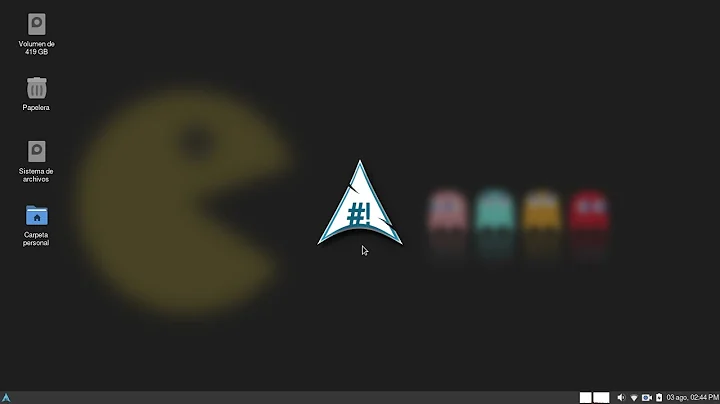Dual boot Arch and Windows 10 with GRUB
As described here, you need to do the following (The following must be done as root on your Arch OS):
As I can assume from your Output /dev/sdb2 seems to be your Windows-Bootloader so the First step will be:
$ mkdir /mnt/windows
$ mount /dev/sdb2 /mnt/windows
$ grub-probe --target=fs_uuid /mnt/windows/EFI/Microsoft/Boot/bootmgfw.efi
Copy the Output of the last Command to a File and proceed with this:
$ grub-probe --target=hints_string /mnt/windows/EFI/Microsoft/Boot/bootmgfw.efi
Also copy the output to the File. After that run the following to unmount the Partition
$ umount /mnt/windows
$ rmdir /mnt/windows
After that open the File /boot/grub/custom.cfg with your preferred editor and add the Following Lines:
if [ "${grub_platform}" == "efi" ]; then
menuentry "Microsoft Windows Vista/7/8/8.1 UEFI/GPT" {
insmod part_gpt
insmod fat
insmod search_fs_uuid
insmod chain
search --fs-uuid --set=root $hints_string $fs_uuid
chainloader /EFI/Microsoft/Boot/bootmgfw.efi
}
fi
Where $hints_string is the second Output and $fs_uuid is the first one.
At least run this to update your Grub:
$ grub-mkconfig -o /boot/grub/grub.cfg
After reboot your Grub should contain the Entry for Windows, for more information about how to configure your Grub see this Page
Related videos on Youtube
Jake
Updated on September 18, 2022Comments
-
 Jake over 1 year
Jake over 1 yearI've been using Ubuntu for a while and recently decided to start using Arch. I have both a 120GB SSD and 1TB HDD in my system. When installing Arch on my SSD, I created partitions for /boot /home / (root) as well as a swap partition. I also have Windows 10 installed on my HDD using the default partitions. I would like to be able to dual boot between the 2 operating systems. I installed GRUB to my SSD on /dev/sda, but now when I boot into GRUB, I only see the option to boot into Arch, not Windows. I was wondering how I could boot into Windows via GRUB.
I have a default "/etc/grub.d/40_custom" file:
#!/bin/sh exec tail -n +3 $0 # This file provides an easy way to add custom menu entries . Simply type the # menu entries you want to add after this comment. Be care ful not to change # the 'exec tail' line above.When I run "lsblk", I get:
NAME MAJ:MIN RM SIZE RO TYPE MOUNTPOINT sda 8:0 0 111.8G 0 disk ├─sda1 8:1 0 200M 0 part /boot ├─sda2 8:2 0 12G 0 part [SWAP] ├─sda3 8:3 0 25G 0 part / └─sda4 8:4 0 74.6G 0 part /home sdb 8:16 0 931.5G 0 disk ├─sdb1 8:17 0 499M 0 part ├─sdb2 8:18 0 100M 0 part ├─sdb3 8:19 0 16M 0 part └─sdb4 8:20 0 930.9G 0 partRunning "fdisk -l" gives me:
Disk /dev/sdb: 931.5 GiB, 1000204886016 bytes, 1953525168 sectors Units: sectors of 1 * 512 = 512 bytes Sector size (logical/physical): 512 bytes / 4096 bytes I/O size (minimum/optimal): 4096 bytes / 4096 bytes Disklabel type: gpt Disk identifier: 47A5839B-C531-4BEE-A083-BD0C5CF4524A Device Start End Sectors Size Type /dev/sdb1 2048 1023999 1021952 499M Windows rec /dev/sdb2 1024000 1228799 204800 100M EFI System /dev/sdb3 1228800 1261567 32768 16M Microsoft r /dev/sdb4 1261568 1953523711 1952262144 930.9G Microsoft b Disk /dev/sda: 111.8 GiB, 120034123776 bytes, 234441648 sectors Units: sectors of 1 * 512 = 512 bytes Sector size (logical/physical): 512 bytes / 512 bytes I/O size (minimum/optimal): 512 bytes / 512 bytes Disklabel type: dos Disk identifier: 0x1c797ba1 Device Boot Start End Sectors Size Id Type /dev/sda1 2048 411647 409600 200M 83 Linux /dev/sda2 411648 25577471 25165824 12G 83 Linux /dev/sda3 25577472 78006271 52428800 25G 83 Linux /dev/sda4 78006272 234441647 156435376 74.6G 83 LinuxAny help would be appreciated, thanks!
-
 dmb almost 6 yearshave you tried
dmb almost 6 yearshave you triedsudo update-grub? -
 Jake almost 6 yearsWhen I try to run that command on Arch, it says that the command cannot be found. According to this: unix.stackexchange.com/questions/111889/…, the "# update-grup" command is referring to "# grub-mkconfig -o /boot/grub/grub.cfg" I've tried to run this command and it didn't solve the issue.
Jake almost 6 yearsWhen I try to run that command on Arch, it says that the command cannot be found. According to this: unix.stackexchange.com/questions/111889/…, the "# update-grup" command is referring to "# grub-mkconfig -o /boot/grub/grub.cfg" I've tried to run this command and it didn't solve the issue. -
 dmb almost 6 yearsThen you should try with grub2
dmb almost 6 yearsThen you should try with grub2sudo grub2-mkconfig -
 Jake almost 6 yearsThanks for the help, I managed to fix it by fixing my MBR
Jake almost 6 yearsThanks for the help, I managed to fix it by fixing my MBR
-




![How to Dual Boot Arch Linux and Windows 11/10 [ 2022 ]](https://i.ytimg.com/vi/JRdYSGh-g3s/hq720.jpg?sqp=-oaymwEcCNAFEJQDSFXyq4qpAw4IARUAAIhCGAFwAcABBg==&rs=AOn4CLBSzIUyGBj3jscPATtEfv2O5-8X6w)